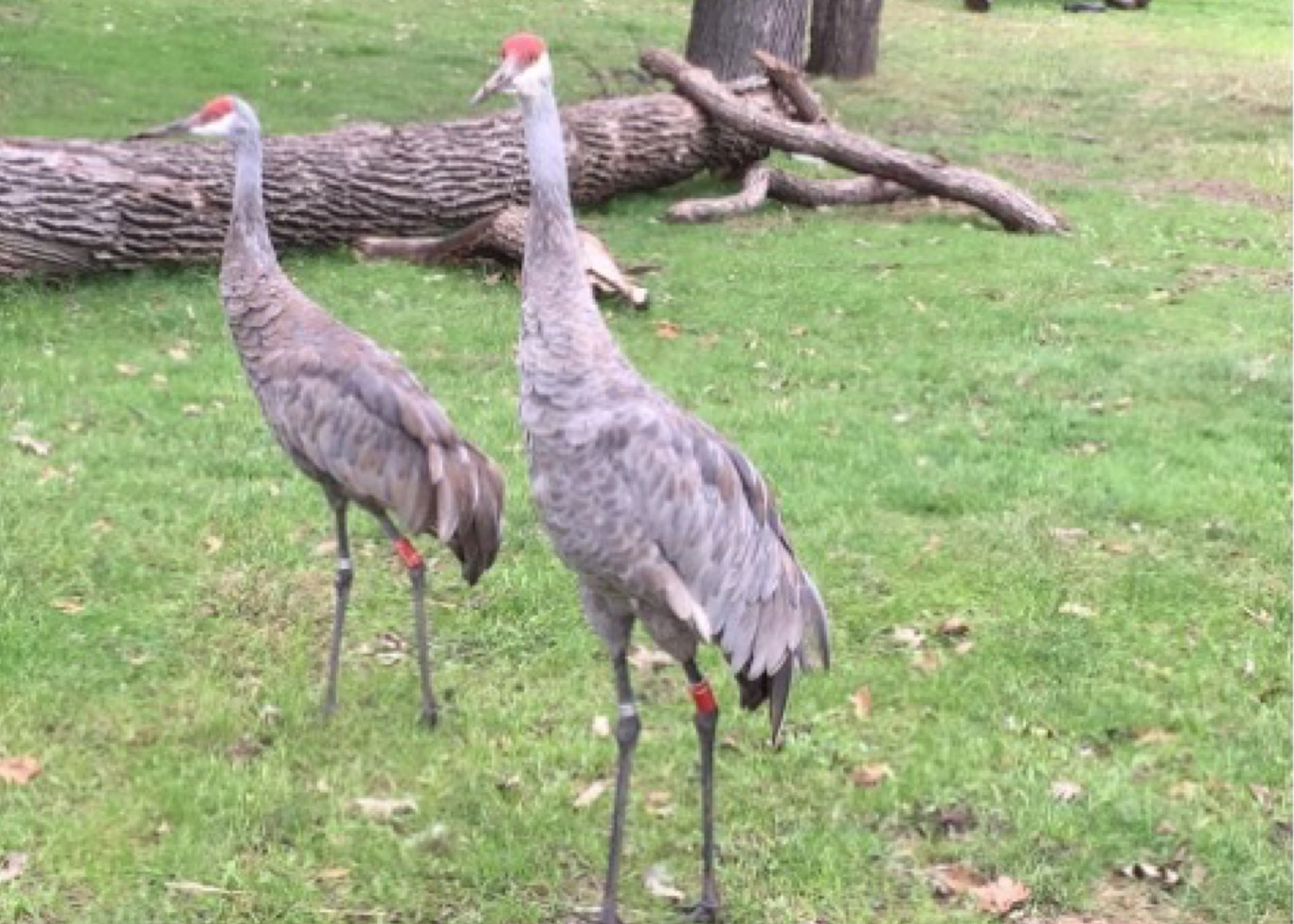Sand Hill Crane
Antigone candensis
Conservation Status: Least Concern
Characteristics:
- Exceptionally large, tall birds with a long neck, long legs, and broad wings.
- Slender neck.
- Short tail covered by drooping feathers that form a “bustle”.
- Small head and straight bill that is longer than the head.
Lifespan: : The average lifespan in the wild is about 20 years.
Range and Habitat:
- North America and extreme northeastern Siberia.
- Require open areas without dense tree cover to allow them added vigilance against predators.
- Wetlands, bogs, and marshes are nesting sites.
- Areas with vegetation growing by standing water.

Diet:
- Plant matter.
- Use bills to dig and prod for seeds, berries, roots, and more.
- Corn, wheat, and cultivated crops.
- Breeding birds will feed on small mammals, insects, snails, frogs, and reptiles.
Behavior:
- Social birds that live in pairs or family groups.
- Unrelated cranes form “survival groups” that forage and roost together.
- Herbivorous.
- Raise one brood per year, laying begins between December and August.
Fun Facts:
- They are fantastic parents.
- Chicks can stand and are moving by 8 hours old.
- They can travel as far as 200 miles in a single day at 35 mph.
- They are known for their skills in dancing. They will stretch their wings, bob their heads up and down, bow and jump into the air, doing an energetic and grateful dance during courtship.
Keeper Notes:
The female crane was born in 1985 while her male counterpart was born in 1984 at a rehabilitation facility in Pennsylvania. The facility was closing, and the cranes came to the zoo for their forever home a few years ago. During mating season, you may see the male crane dancing for the female crane.

